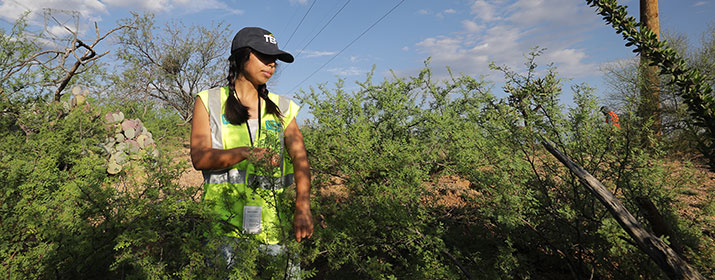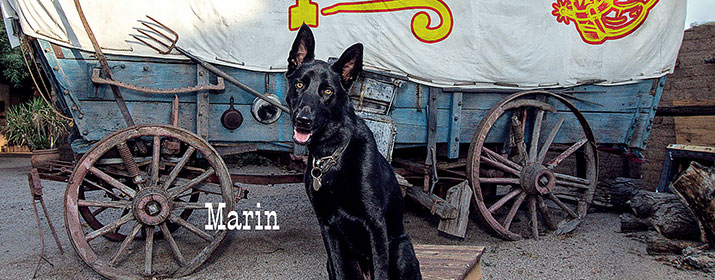
TEP takes special care to rescue and preserve native cactuses and plants when building and upgrading our facilities, including a major project starting this month.
Since 1999, TEP has enlisted volunteers from the Tucson Cactus & Succulent Society (TCSS) to help relocate viable saguaros, ocotillos, and other native plants to areas where they can prosper. Sometimes that means simply transplanting them outside of a planned work area.
As part of the planning process, TEP Environmental and Land Use Planners work with consultants to conduct surveys of project areas to determine which cactuses and other native plants may need to be moved before construction begins.
The effort ensures that we preserve the natural environment as much as possible in areas where we’ll be installing equipment to maintain energy reliability.
Donna Ellis, the Society’s Native Plant Rescue Coordinator, said TEP goes above and beyond legal mandates during plant rescues.
“It’s amazing. TEP takes an active role in saving plants that they are not required to do. That’s what sets TEP apart,” Ellis said.
In our next major undertaking, we anticipate rescuing thousands of plants over the next three years as we build out the Vail to Tortolita Transmission Line project. About 64 miles of transmission line between Vail Substation in Pima County and Tortolita Substation in Pinal County will be upgraded in a joint project sharing pole structures with Western Area Power Administration (WAPA).
Plant salvage work begins in September and project construction is scheduled to start in March.
Plant inventory kicked off in January 2023 when consultants conducted a native plant survey to determine locations where plants could be salvaged or transplanted, either nearby in the native range or to another location, said Leslie Carpenter, Senior Environmental and Land Use Planner. The goal is to maintain as many as possible, particularly saguaros.
“We’re working to identify the growth rates of saguaros and determine the best place for them to be transplanted,” said Crystal Dillahunty, Environmental Land Use Planner. “We want to make sure they are viable and will thrive.”
TEP coordinates smaller rescues a few times a year with volunteers.
“What I like best about working with TEP is that they actively include us in project planning,” Ellis said. Her organization worked with TEP volunteers over the summer over two days in the Sahuarita area where they rescued 38 native plants, many of them ocotillos.
The effort took place where TEP is replacing wooden H-frame poles with 18 steel poles to improve reliability, said Keri Tallorin, a TEP Land Resources contractor. The project is near West Ruby Star Drive and South Mission Road close to the Freeport-McMoRan Mine in the Sahuarita area.
Some rescued plants that aren’t relocated on site typically are sold at the TCSS nursery to benefit the nonprofit group. Others are donated to Pima Prickly Park, local governments, or to volunteers who can provide them with a good home.
“It gives people in town an alternative for landscaping,” Ellis said. “Once you get your desert plants planted and acclimated, you really don’t have to water them at all.”
Historically, TEP’s salvage efforts have protected some rare plants, including the endangered Pima Pineapple Cactus.
Queen of the Night plants, which bloom just once a year, were rescued in 2014 during construction at TEP’s Irvington campus and were taken to other locations, including the Krutch Garden at the University of Arizona.
During construction of a central Arizona transmission line in 2016, more than 82 percent of the land was undisturbed, thanks in part to environmental awareness training that was provided for all 235 construction crew members. During construction, more than 1,300 saguaros were avoided and more than 900 cactuses and trees were salvaged.






